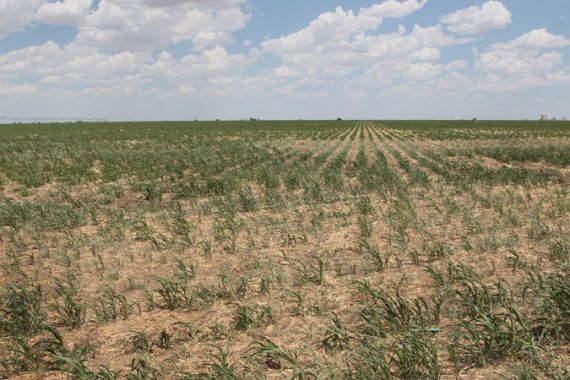Southern states continue to deep-fry
The heat wave is still affecting parts of the U.S.

 |
| Keeping cool in the heat wave affecting Oklahoma {GALLO/GETTY] |
There is still no sign of a let-up in the heat wave that has baked parts of the United States for more than a month. Whilst worldwide attention is on the country’s burgeoning debt and falling credit rating, for many Americans it is day-to-day life which is of greatest concern.
For some, this is the worst heat wave in 140 years. More than 2,000 temperature records were broken in the month of July alone. From Kansas to Texas and from southern Illinois to Missouri heat advisories remain in force as temperatures remain dangerously high. Some towns and cities have now experienced more than 40 consecutive days with temperatures in excess of 38 degrees Celsius (100F).
Keep reading
list of 4 items‘Mama we’re dying’: Only able to hear her kids in Gaza in their final days
Europe pledges to boost aid to Sudan on unwelcome war anniversary
Birth, death, escape: Three women’s struggle through Sudan’s war
The heat has resulted in record electricity consumption in Texas. A ‘power emergency’ was declared as air-conditioning and cooling systems worked flat out to make life more comfortable for a population which has been struggling to cope with the sizzling conditions.
The heat wave is thought to have claimed in excess of 60 lives and many elderly people are reportedly struggling to cope in the exhausting conditions.
The death toll from the heat has not been restricted to humans. It is estimated that at least 4,000 cattle have died in Iowa as a result of the heat and drought.
The United States is no stranger to heat wave conditions. The most famous heat wave was that of 1936 which resulted in 5,000 fatalities. The resulting ‘dust bowl’ was the inspiration for John Steinbeck’ s ‘The Grapes of Wrath’. Subsequent heat waves have also left their mark.
The one that lasted from June to September in 1980 claimed approximately 10,000 lives and is estimated to have cost the country more than $55 billion.
The Illinois heat wave of 1995 claimed 525 lives and as recently as 2006 150 people perished as a result of exceptional temperatures across California.
The death toll from the 2011 heat wave is likely to increase as the heat persists. In fact, the National Weather Service has warned that heat claims more lives each year than floods, lightning, tornadoes and hurricanes combined.
The forecast contains no real hint any significant improvement. High pressure, with hot air trapped beneath, is expected to continue for the foreseeable future.